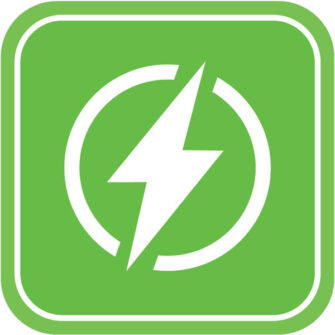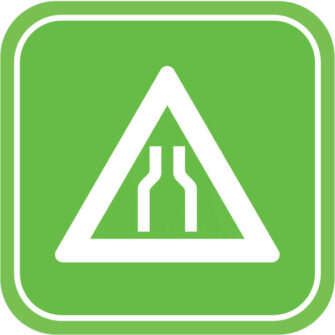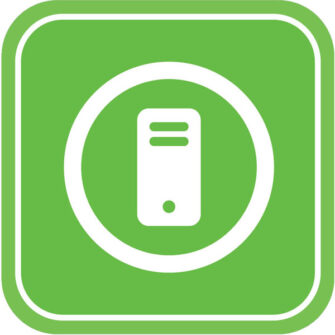Choosing the right specs are important, but that is not the be all and end all of buying a workstation. Greg Corke looks at some other critical points to consider
Power usage
Power usage has become an even more critical consideration in recent years. Firms have long been aware of their obligation to protect the environment. Now with rising energy costs they are feeling the pinch.
The fact is that energy consumption of processors has been rising steadily. Today we have mainstream workstation processors that draw over 250W at peak and high-end GPUs that hit 450W.
There are many ways to save power, but choosing the right hardware is arguably the most important.
First, consider a power efficient CPU with fewer cores. Intel Core i5 processors, for example, use significantly less power than Intel Core i9 processors, and won’t be that much slower in single threaded or lightly threaded workflows, such as CAD or BIM. Super compact workstations like the Lenovo ThinkStation P3 Tiny offer T suffix Intel Core i5 processors that consume even less power. There are also AMD Ryzen processors which, overall, offer better performance per watt than Intel Core, though they are not as widely available.
Second, buy GPUs that are matched precisely to your workflows. If your viz datasets aren’t that complex and you can smoothly navigate your scene with a 70W GPU like the Nvidia RTX A2000, do you really need the 130W Nvidia RTX 4000 Ada Generation? More powerful GPUs might be able to render your scene with more frames per second, but you probably won’t notice a difference. Of course, offline renders will come back faster.
Bottlenecks
Understanding how your software works and where your bottlenecks occur can help you make informed decisions on workstation purchases. Don’t presume that software developers know how their software performs with different processors. Recommended specs are not always accurate or up to date.
Many of the major workstation OEMs offer free workstation tuning software that can monitor resources in real time and over a set period. Other good tools include GPU-Z for monitoring GPU usage, CPU-Z for CPU, HWinfo and Windows Performance Monitor.
If you are experiencing slow 3D performance, for example, check to see how much of your GPU is being used. If it’s 100%, then investing in a more powerful GPU would probably help. However, if usage is significantly lower, you could be wasting your money and would be better off buying a CPU with a higher boost frequency.
Once you understand where your bottlenecks occur, it can help you assign budget to the correct areas and tailor a workstation for your specific workflows. Read this AEC Magazine article to find out more.
Warranty
Virtually all workstations come with a three-year warranty, but the level of cover can vary considerably between manufacturers. This isn’t just about protecting your investment. In the event of a failure, you need to get your workstation back up and running as quickly as possible and with minimal hassle.
A next business day (NBD) on-site warranty is common with workstations from major OEMs. Some custom manufacturers only offer ‘return to base’ as standard or NBD on site for the first year. Having to send away your workstation to be repaired could mean days without its use, which could be catastrophic when on a tight project deadline.
Many minor repairs can be done by yourself. Some manufacturers specifically make their workstations easy to service, so customers can be guided over the phone or video call and get themselves back up and running the same day (or the next day if a part needs to be sent out). Other manufacturers state that any repairs or alterations that are carried out by the customer invalidate the warranty, so check with your supplier first.
When comparing prices of workstations, make sure you are looking at details of the warranty and not just the specifications of the machine. Warranties can be extended and negotiated, so also bear that in mind.
The maker
A common question is whether to buy your workstation from a specialist system builder or a major OEM like Dell, HP or Lenovo. There’s no simple answer, but there are a number of things to consider.
Custom manufacturers are more flexible in how machines can be configured and are generally quicker at introducing new technologies. Many such firms overclock their CPUs, which can boost performance.
OEMs, on the other hand, spend much more time on R&D to make sure that components work well together and do extensive studies into acoustics, electromagnetic interference and thermodynamics.
OEM workstations tend to be more solid and easier to service, particularly as some custom manufacturers try to cut costs by using budget PC chassis. They also have long term availability, so if you find a system / spec that works for your project team, you will probably be able to buy it for several years.
Major OEM workstations also go through extensive testing and certification to ensure they work well. Some software developers will not provide full support if you don’t have certified hardware. With custom manufacturers, you are usually just getting the certification of the GPU.
Of course, many large architecture or engineering firms will only buy from major OEMs for reasons of support, management or global availability, so the decision is already made.
 The chassis
The chassis
Workstations are about so much more than just their constituent parts. The chassis can be incredibly important. There are four main points to consider: size, noise, cooling and serviceability. But easy access to things like USB ports, USB charging ports, hot swappable storage or headphone sockets can also make a big difference.
Ask yourself the following questions:
• Will the machine fit on your desk, or will it have to be kept down by your feet?
• Could it be attached to the back of a monitor?
• Can it fit in a rack?
• How many can you fit in a rack?
• If you need to move it, is it heavy and does it have built-in handles?
• Are the fans so noisy that they are distracting?
• Do the fans do their job or will they make the processor throttle?
• Will the chassis serve you well into the future?
• Can you expand the system with GPUs, storage or memory (are there free memory slots)?
• Is it easy to service internal components?
• If your power supply unit or fans fail, how easy are they to change?
Of course, if you are the type of person that would never dream of getting inside a computer then serviceability is a moot point. Think about the things that matter to you. For some, aesthetics are very important.
This article is part of AEC Magazine’s Workstation Special report
Scroll down to read and subscribe here
Featuring
- Power to the people: the importance of power in performance
- Know your workstation – From GPU to CPU, memory to storage
- Beyond performance: from power and warranty to chassis and bottlenecks
- Review: AMD Ryzen Threadripper 7000 Series
- Review: HP Z6 G5 A (Threadripper Pro)
- Review: Lenovo ThinkStation P8 (Threadripper Pro)
- Review: Armari Magnetar M64T7 (Threadripper HEDT)
- Review: Workstation Specialists WS IC-Z7900 (14th Gen Intel Core)
- Review: AMD Radeon Pro W7500, W7600 & W7700 workstation GPUs
- Review: Nvidia RTX 4000 Ada Generation workstation GPU
- Working and rendering beyond the desktop
- Remote possibilities: Lenovo targets the cloud
- Inevidesk: flexible virtual workstations






